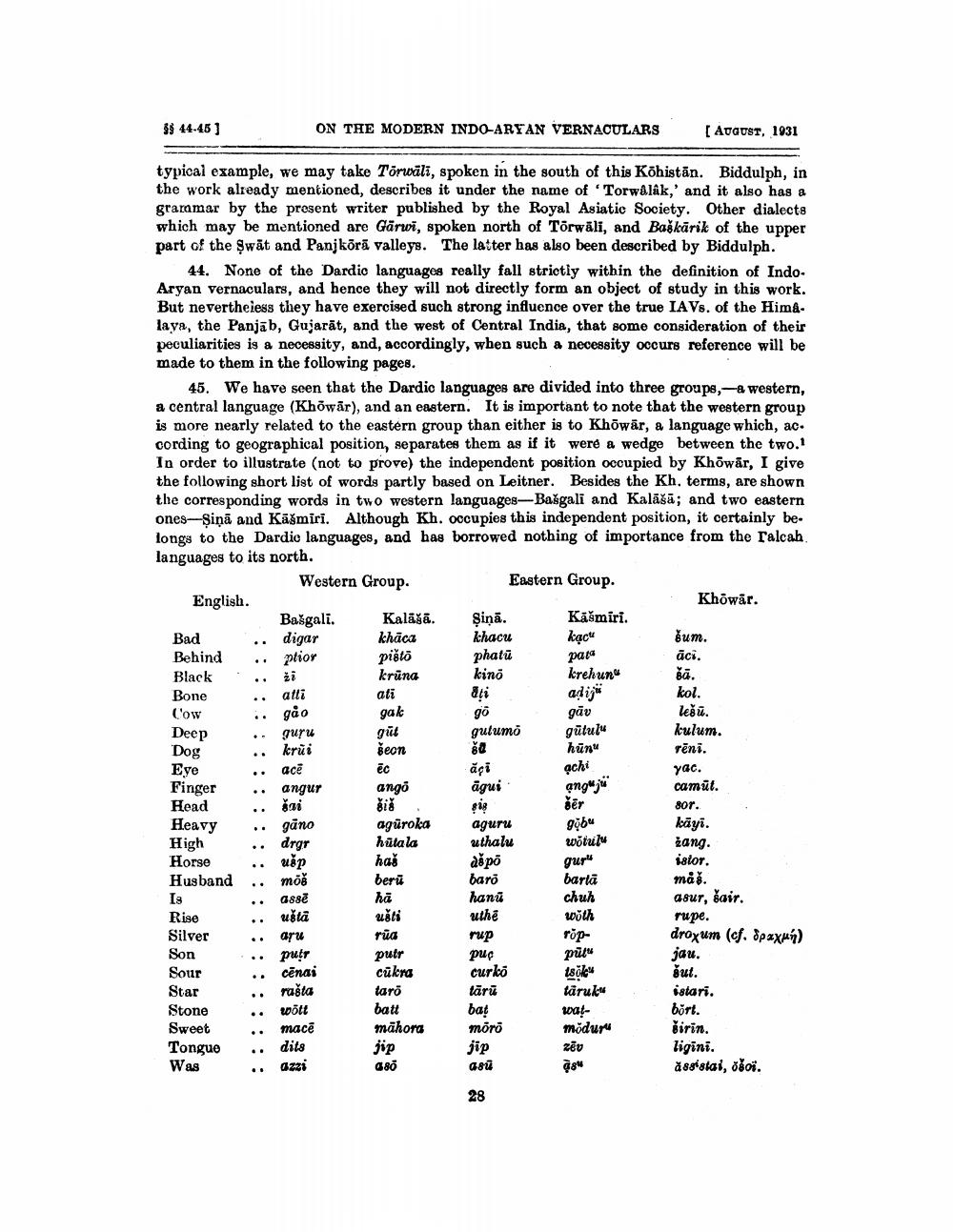________________
$$ 44-45 1
ON THE MODERN INDO-ARYAN VERNACULARS
[ August, 1931
typical example, we may take Torwāli, spoken in the south of this Kõhistān. Biddulph, in the work already mentioned, describes it under the name of 'Torwalâk,' and it also has a graramar by the present writer published by the Royal Asiatic Society. Other dialects which may be mentioned are Gārwi, spoken north of Torwāli, and Baškārik of the upper part of the Swāt and Panjkõrā valleys. The latter has also been described by Biddulph.
44. None of the Dardic languages really fall strictly within the definition of Indo. Aryan vernaculars, and hence they will not directly form an object of study in this work. But nevertheless they have exercised such strong influence over the true IAVs. of the Hima. lava, the Panjab, Gujarat, and the west of Central India, that some consideration of their peculiarities is a necessity, and, accordingly, when such a necessity occurs reference will be made to them in the following pages.
45. We have seen that the Dardic languages are divided into three groups,-a western, a central language (Khowar), and an eastern. It is important to note that the western group is more nearly related to the eastern group than either is to Khāwār, a language which, ac. cording to geographical position, separates them as if it were a wedge between the two.1 In order to illustrate (not to prove) the independent position occupied by Khowār, I give the following short list of words partly based on Leitner. Besides the Kh. terms, are shown the corresponding words in two western languages-Bašgali and Kalāšā; and two eastern ones-Sinā and Kašmiri. Although Kh. occupies this independent position, it certainly be. longs to the Dardio languages, and has borrowed nothing of importance from the Talcah languages to its north. Western Group
Eastern Group. English.
Khowar. Bašgali. Kalašā.
Kašmiri. Bad khica khacu kąc
šum. Behind ptior pišto phatu
āci. Black
kruna kino krehun šā. Bone
ati ati
kol. gåo
gāv
lešu. Deep
guru gūt gutumo gūtulu
kulum. krui šeon
hūnu
rēni. Eye
ēc āci achi
yac. angur ango
agui angaj
camut. Head šai
ģēr
sor. Heavy gano agüroka aguru
kāyi. High drgr hūtala uthalu
wõtul
žang. Horse
uěp haš aš po guru
istor. Husband ..
beru baro barla
mås. ha hanú chuh
asur, šair. Rise
แati uthe woth
rupe. Silver
aru rūa rup rop
droyum (cf. dpaxun) Son
putr putr puc pūt
jau. Sour
cēnai cukra curko tsok*
sut. Star rašta
tāru taruku
istari. Stone wött batt
wat
bort. Sweet
macē mahora moro mõdur širin. Tongue dits jip
ligini. Was azzi авӣ
à ssistai, ošož.
şiņā.
.. digar
раа
atti
Cow
gak
gö
Dos
ace
Finger
:::::::::::::::::::
göbo
moš .. asse .. ušta
taro
bar
jip
zēv
680
su
29




